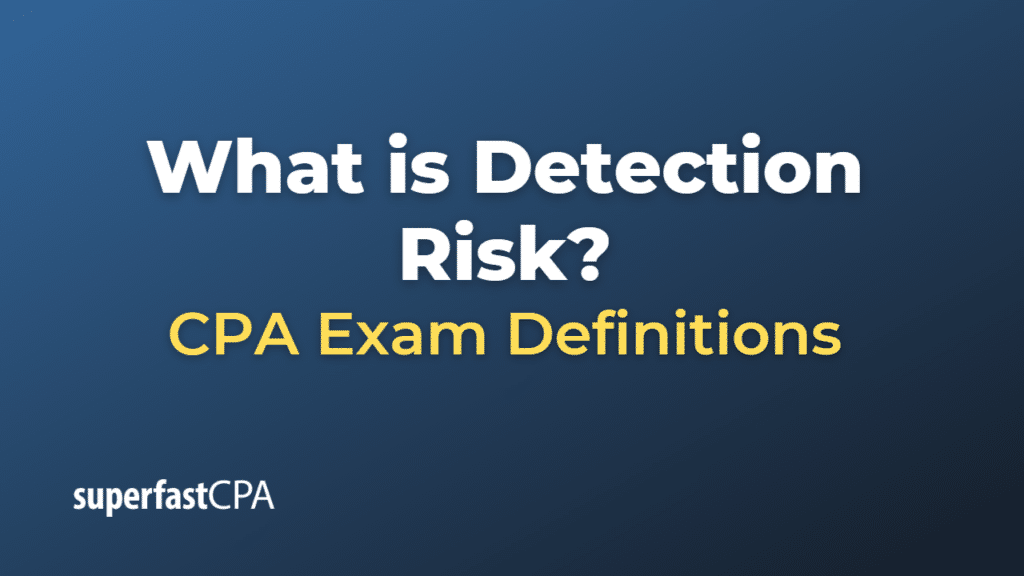Detection Risk
Detection risk is a component of audit risk, which is the risk that an auditor fails to detect material misstatements in the financial statements, causing them to issue an incorrect audit opinion. Material misstatements could be due to error or fraud.
Detection risk is influenced by the effectiveness of the auditing procedures and how well they are applied by the auditors. In other words, detection risk can be due to either:
- The nature of the auditing procedures themselves, i.e., using audit procedures that are not appropriate or not effective in finding misstatements, or
- The application of those procedures, i.e., the auditors failing to properly execute the correct audit procedures.
It’s important to understand that detection risk is inversely related to audit risk and its other components, inherent risk and control risk. Inherent risk is the susceptibility of an assertion to a material misstatement, assuming there are no related controls, while control risk is the risk that a misstatement could occur and the entity’s internal controls will not prevent or detect it.
If the inherent risk and control risk are high, the auditor would aim to keep detection risk low to reduce the overall audit risk. They might do this by conducting more extensive or rigorous auditing procedures. Conversely, if inherent risk and control risk are low, the auditor might accept a higher detection risk, which could allow for less extensive auditing procedures.
Ultimately, the auditor’s goal is to reduce audit risk to an acceptably low level, considering the balance among inherent risk, control risk, and detection risk.
Example of Detection Risk
Suppose you’re an auditor for a tech company, and you are auditing the revenue for the company.
- Inherent Risk: You know that the tech industry is rapidly changing and that the company often enters into complex sales contracts with multiple deliverables, which can make revenue recognition more complicated and prone to error. This means the inherent risk could be high.
- Control Risk: You’ve evaluated the company’s internal controls over revenue recognition and found some weaknesses. For example, there’s a lack of segregation of duties, meaning the same person who records the sales transactions also has the ability to alter those records. This increases the control risk.
Given the high inherent and control risks, you would want to keep the detection risk low to ensure overall audit risk is at an acceptable level. This means you need to be very thorough in your audit procedures to make sure you don’t overlook any material misstatements.
To decrease detection risk, you might:
- Increase the size of your sample for testing sales transactions.
- Conduct more in-depth testing, such as examining the terms of sales contracts in detail to ensure revenue is recognized correctly.
- Perform analytical procedures, such as comparing this year’s revenue trends to previous years or industry data, looking for unusual patterns or discrepancies.
Remember, the goal is not to eliminate detection risk entirely (which would be impossible) but to reduce it to an acceptable level given the circumstances.













